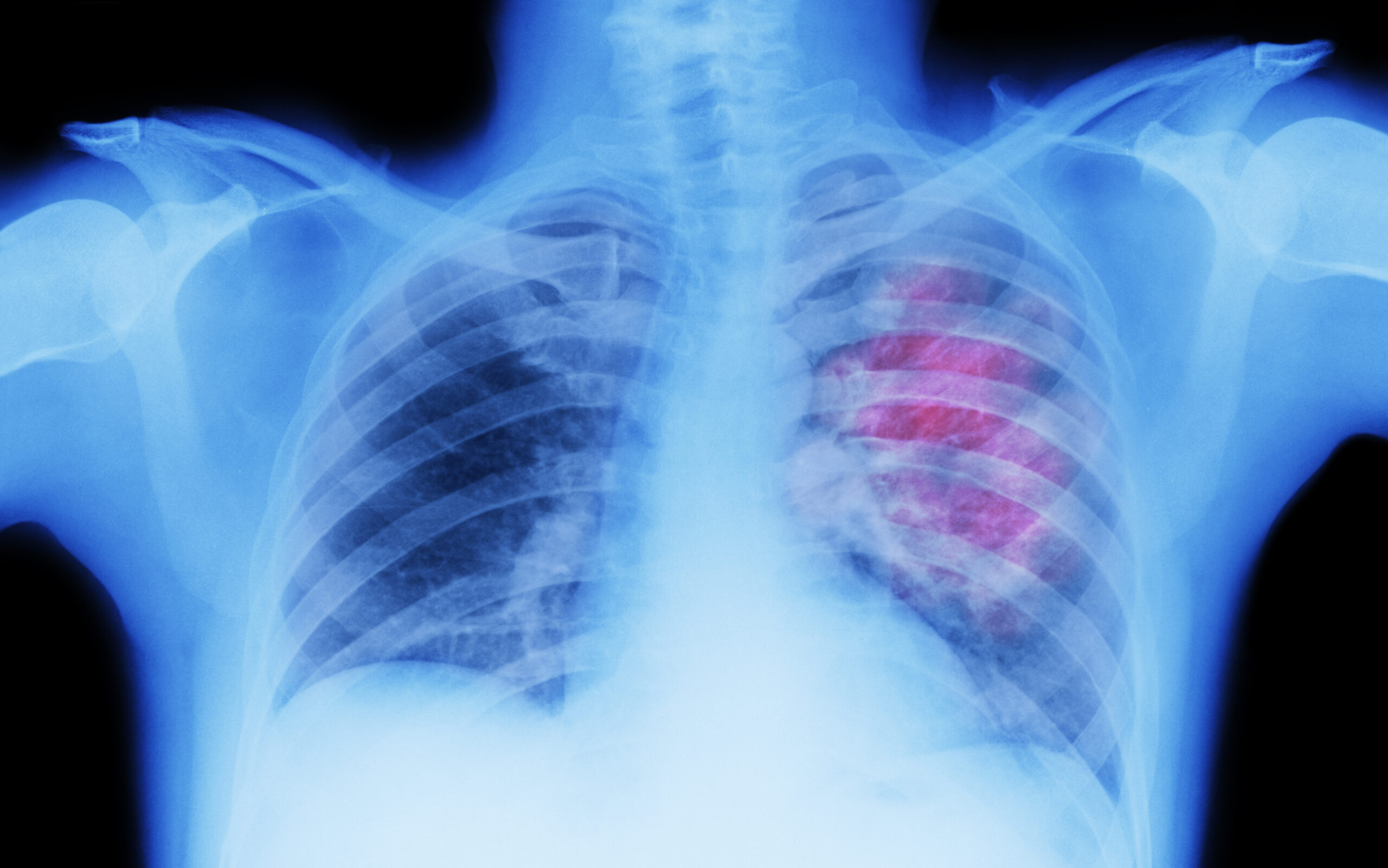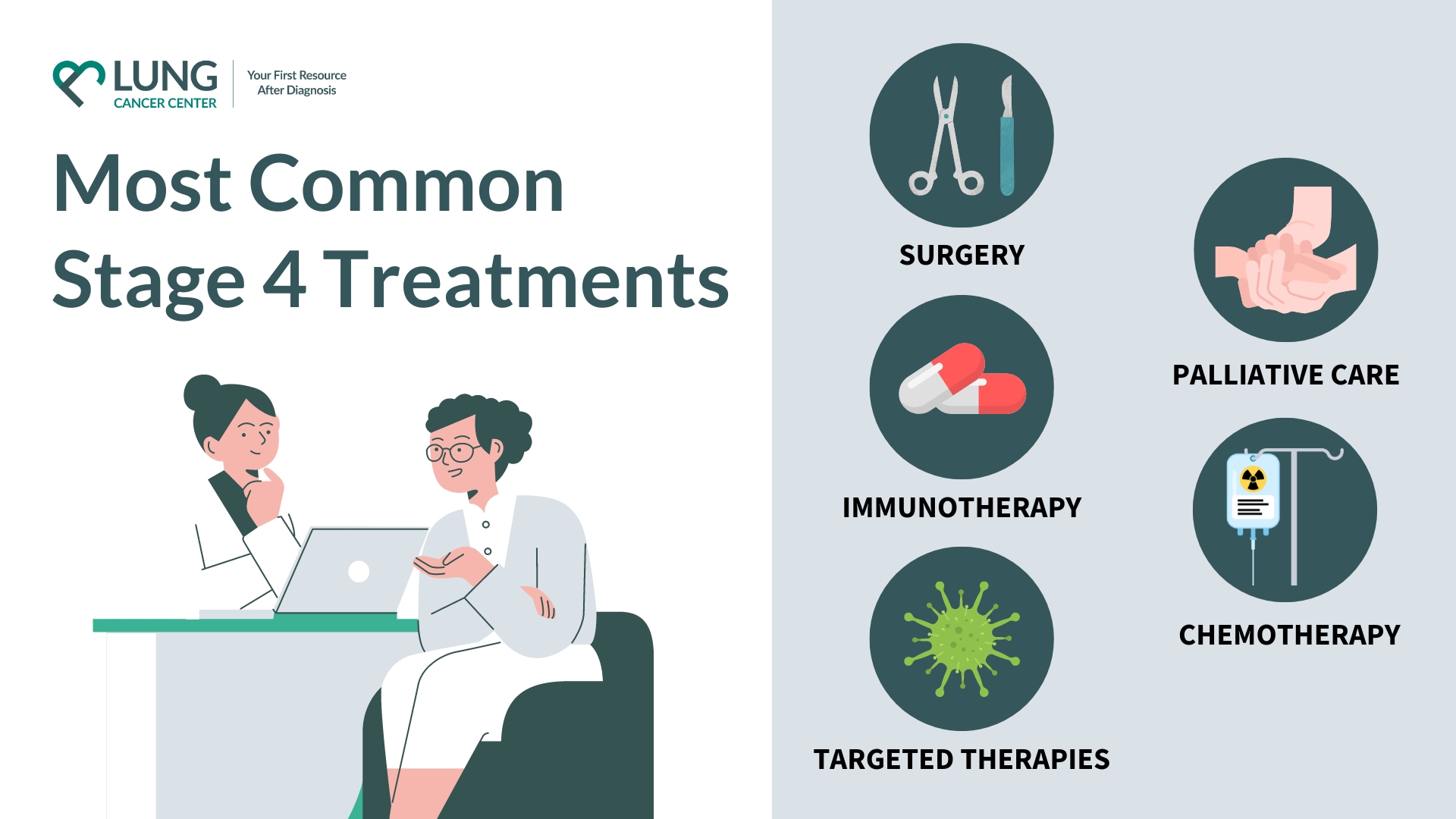Is Stage 4 Lung Cancer Curable?
By Madeline May |
Lung cancer patients are often diagnosed during the advanced stages, such as stage 4. This late diagnosis often impacts a patient's treatment options and survival rate.


Can Stage 4 Lung Cancer Be Cured?
In 2020, lung cancer caused 1.80 million cancer deaths worldwide, the leading cause of cancer deaths that year. Sadly, most patients are diagnosed with lung cancer in the advanced stages, such as stage 4. Consequently, patients’ treatment options and survival rates can look drastically different than those diagnosed in the early stages.
After receiving a stage 4 lung cancer prognosis, many patients are unsure of what to expect. Although there is no cure, there are treatment options available to patients in later stages of lung cancer aimed to prolong life and make it more enjoyable. If you’ve been diagnosed with stage 4 lung cancer, or you’re helping a family member or friend who has, this article breaks down what that means, what to expect, and what treatment options are available. Hopefully, this will help those affected with a clearer roadmap to help you feel more prepared when talking with doctors and making treatment decisions.
How Long Can You Live with Stage 4 Lung Cancer?
Although many patients receive a poor prognosis during stage 4, there is still a life worth living. Lung cancer patients will often be given the amount of time that they have left, where they can then plan both curative and palliative treatments to help them live longer. Once your prognosis is determined, you will better understand your life expectancy.
Several factors help determine the survival rates of stage 4 lung cancer. Characteristics such as stage, metastasis, weight loss, performance status, sex, and lung illnesses all affect the survival rate of lung cancer patients.
| Stage of Lung Cancer | 2-Year Survival Rate (% Alive 2 Years Later)* |
| Stage IVA | 23 percent |
| Stage IVB | 10 percent |
| Stage of Lung Cancer | 5-Year Survival Rate (% Alive 5 Years Later)* |
| Stage IVA | 10 percent |
| Stage IVB | 0 percent |
Stage 4 Lung Cancer Survival Rate by Age
Survival rates for stage 4 lung cancer can vary based on several factors, including the type of cancer, overall health, and how well a person responds to treatment. Age is one of the most consistent predictors. Understanding how age impacts survival outcomes can help patients and caregivers set realistic expectations and make informed decisions about care.
| Age Diagnosed with Stage 4 Lung Cancer | Survival Rate |
| Under 50 | 11 percent |
| Ages 50-64 | 7 percent |
| 65 and Older | 4.7 percent |
What is Stage IV Lung Cancer?
Lung cancer is categorized into four stages, labeled stage I through stage IV. Stage IV is the most advanced, and unfortunately, this is when many people first receive their diagnosis. If you or someone close to you has just learned they have stage 4 lung cancer, it likely means the cancer has spread — or metastasized — beyond one lung to other areas of the body.
At this stage, cancer cells may be found in the opposite lung, nearby lymph nodes, or even in distant organs such as the bones, brain, or liver. This spread affects treatment planning, symptoms, and overall outlook. Choosing a cancer center or hospital located in your area can relieve stress and worry when thinking about whether your diagnosis is curable, and understanding what stage IV really means can help you have more productive conversations with your care team and prepare for what’s next.
Non-Small Cell Lung Cancer
Non-small cell lung cancer (NSCLC) is the most common type of lung cancer, making up about 90% of all lung cancer diagnoses. Unlike small-cell lung cancer (SCLC), which spreads faster, NSCLC tends to grow more slowly, which typically means by the time many people are diagnosed, the cancer has often advanced to later stages, like stage 4, where treatment options become more limited, especially due to factors like age and health. Understanding whether you’re dealing with NSCLC or SCLC can help guide treatment choices and set expectations moving forward.
Stage IVA & Stage IVB
During this stage, the cancer cells have metastasized to the second lung and into the space holding fluid around the lungs or heart. Additionally, at least one lymph node on the second lung or chest has been affected. In stage IVB, the tumors can vary in size. Typically, more than one tumor has metastasized outside of the chest and into distant organs and areas of the body.
Small Cell Lung Cancer
Small cell lung cancer (SCLC) is often classified as an “extended stage” cancer, meaning it behaves a bit differently from non-small cell lung cancer (NSCLC). SCLC grows and spreads much faster, making it more aggressive. Because of this, it’s also usually diagnosed at a more advanced stage, which can limit treatment options in its own right. It’s treated separately from NSCLC, so the approach to managing it can vary.
Stage IV – Extended
Lung cancer tumors have metastasized to other areas of the chest, lymph nodes, and the other lung, bone, brain, or bone marrow during this stage. Around two-thirds of people diagnosed with SCLC are in the extended stage.
What Does Terminal Lung Cancer Mean
During stage 4, patients will receive a unique prognosis that will determine their next steps, such as treatment options and projected survival rates. People with lung cancer and mesothelioma diagnosed during the fourth stage frequently experience a different prognosis than those diagnosed in earlier stages. Because the cancer is fully developed, there are fewer treatment options; therefore, the stage 4 lung cancer prognosis is less favorable.
Additionally, the median survival time for those with stage 4 lung cancer is four months, meaning that 50% of patients will be alive only four months after their diagnosis. Sadly, this means that most patients experience a terminal stage 4 lung cancer prognosis.
For more information, fill out a free case evaluation form today.
What Does Stage 4 Lung Cancer Do to the Body?
Stage 4 lung cancer can affect the body in many ways, both physically and mentally. As the cancer spreads, it can cause a range of symptoms that might change as the disease progresses. These symptoms vary from person to person, but it’s important to be aware of them so you can manage them as best as possible. Here are some of the common symptoms that may show up as stage 4 lung cancer takes its toll:
Symptoms include:
- Back and abdominal pain
- Excessive coughing
- Coughing up blood, Hemoptysis
- Fatigue or weakness
- Growth in neck or collarbone
- Breathing issues
- Loss of breath
- Little appetite
Is There Any Treatment for Stage 4?
When it comes to stage 4 lung cancer treatment, again, it varies depending on your exact situation and health status, which only a doctor can confirm. While a cure for stage 4 lung cancer is unlikely, there are still treatments that can help manage symptoms, slow progression, and improve quality of life. The main treatment options for stage 4 lung cancer include:
- Chemotherapy: This is commonly used to target cancer cells throughout the body, helping to reduce tumor size and slow growth.
- Radiation: Often used to treat specific areas affected by the cancer, radiation can help relieve symptoms like pain and difficulty breathing.
- Surgery: Although less common in stage 4, surgery may be an option in certain cases to remove specific tumors that are causing complications.
- Targeted Therapies: These targeted therapies focus on specific genetic mutations in cancer cells, helping to block signals that allow cancer to grow.
Those dealing with cancer need to work closely with their healthcare provider to determine the best approach. Consulting with an experienced doctor at a reputable mesothelioma medical treatment center, or one specializing in advanced cancers, will give you every advantage in your fight. These specialists can offer tailored treatments and support options to help you navigate this challenging stage of lung cancer. They also provide guidance on managing the physical and emotional aspects of living with stage 4 cancer.
How Many Chemo Treatments for Late-Stage Lung Cancer?
Chemotherapy is a cancer treatment used to treat lung cancer by injecting medicine into the blood. For advanced cancer stages, like stage 4, chemotherapy treatments are given differently than in earlier stages. Medical professionals give chemotherapy in cycles, with each treatment followed by a rest period. Chemotherapy can have detrimental effects on the body, so the rest period is essential to maintain a patient’s physical and mental health. These chemo cycles are typically 3 or 4 weeks long, depending on the drug administered. Each chemotherapy medicine schedule will look different.
Typically, for advanced lung cancer, initial chemotherapy treatment lasts for 4 to 6 cycles. Additionally, some medical professionals may recommend an additional treatment, such as a targeted drug, if the patient responds well to initial treatment. This additional treatment is often referred to as maintenance therapy to help people live longer.
Stage 4 Lung Cancer Palliative Treatment
However, during stage 4 of lung cancer, the options are often beyond curative methods. Instead, a health professional may recommend palliative treatment to ensure a patient’s comfort. Palliative treatments help patients manage symptoms, pain, and side effects. Palliative treatments can include:
- Cough suppressants
- Counseling and emotional support
- Massage therapy
- Pain management medication
- Nutritional supplements
- Mindfulness practices
How Can I Get Stage 4 Lung Cancer Treatment Help?
Choosing a team of health professionals and where to receive treatment is an important decision for a lung cancer patient. However, it can be challenging to find the right doctors in an area near you. If you’re still in the process of understanding the stages or comparing outcomes, you may be wondering if at least stage 3 lung cancer is curable, it is also considered advanced, and typically comes with more treatment options and a more favorable prognosis than stage 4.
Picking the right cancer doctor can be difficult, as there are many options. However, it is an important decision that should be made with care and time. A cancer patient should feel comfortable and confident with their medical professional. Reach out today to help us ease the burden.